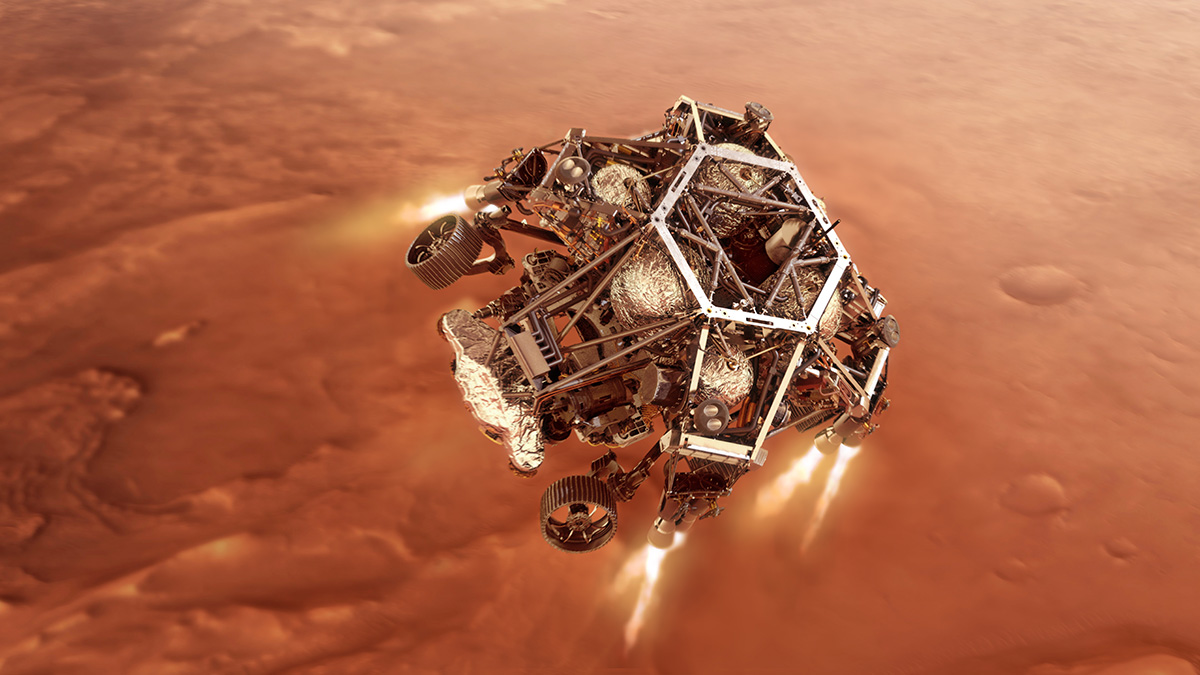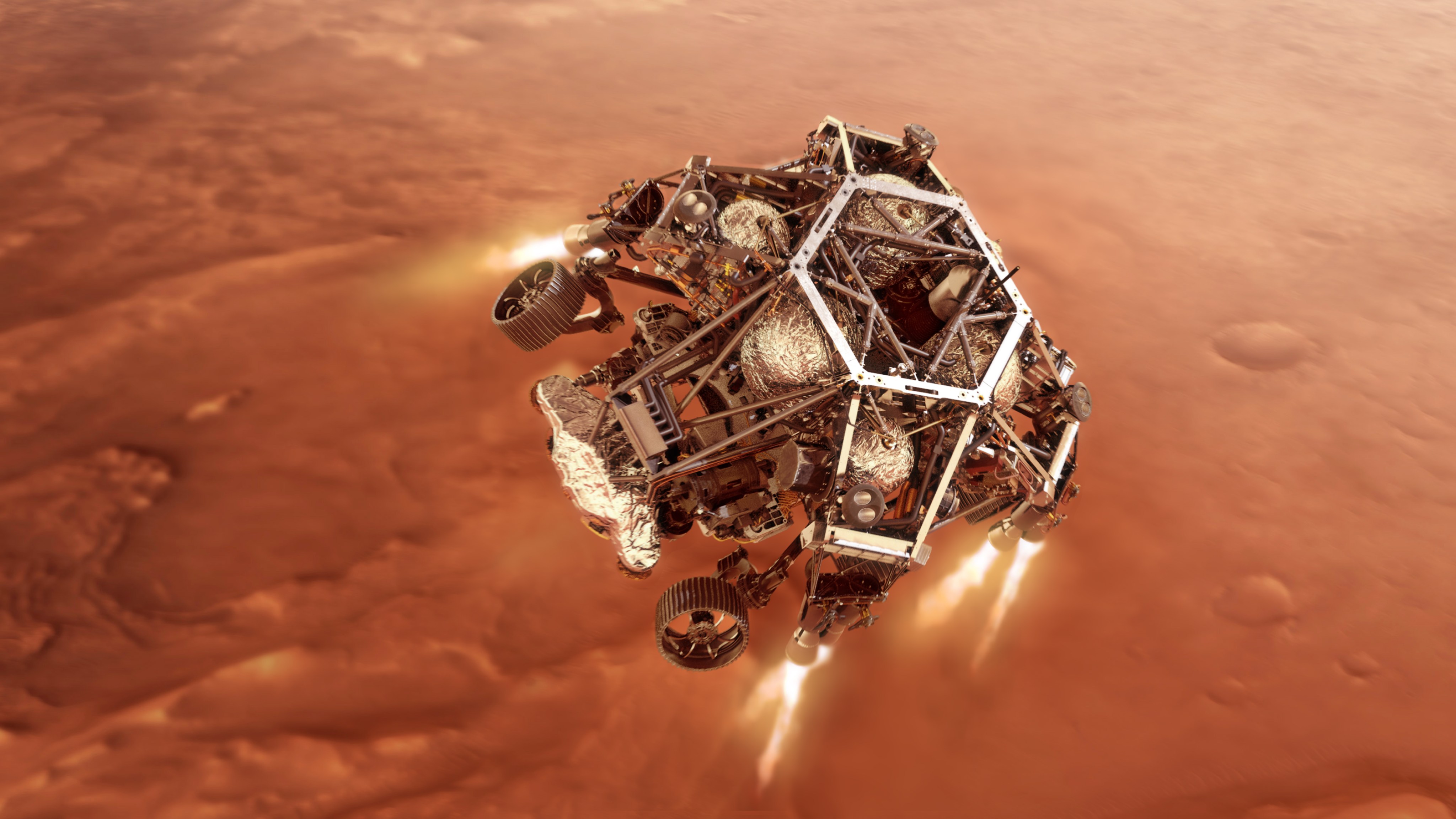Powered Descent for Perseverance (Illustration)

| Credit | NASA/JPL-Caltech |
|---|---|
| Language |
|
NASA’s Perseverance rover fires up its descent stage engines as it nears the Martian surface in this illustration. This phase of its entry, descent and landing sequence, or EDL, is known as “powered descent.” Hundreds of critical events must execute perfectly and exactly on time for the rover to land safely on Feb. 18, 2021.
The cruise stage separates about 10 minutes before entering into the atmosphere, leaving the aeroshell, which encloses the rover and descent stage, to make the trip to the surface.
At about 6,900 feet (2,100 meters) above the surface, the rover separates from the parachute and backshell. At this point, the rover is joined to the descent stage, which functions as a sort of jetpack for the rover. The descent stage fires up its engines, flies to a reachable self-selected safe landing target, levels out, and slows to its final descent speed of about 1.7 mph (2.7 kph). It then initiates the “skycrane” maneuver: about 12 seconds before touchdown, roughly 66 feet (20 meters) above the surface, the descent stage lowers the rover on a set of cables about 21 feet (6.4 meters) long. The rover unstows its mobility system, locking its legs and wheels into landing position.
EDL ends about seven minutes after atmospheric entry, with Perseverance stationary on the Martian surface.
NASA's Jet Propulsion Laboratory in Southern California built and will manage operations of the Mars 2020 Perseverance rover for NASA.
For more information about the mission, go to: https://mars.nasa.gov/mars2020.

